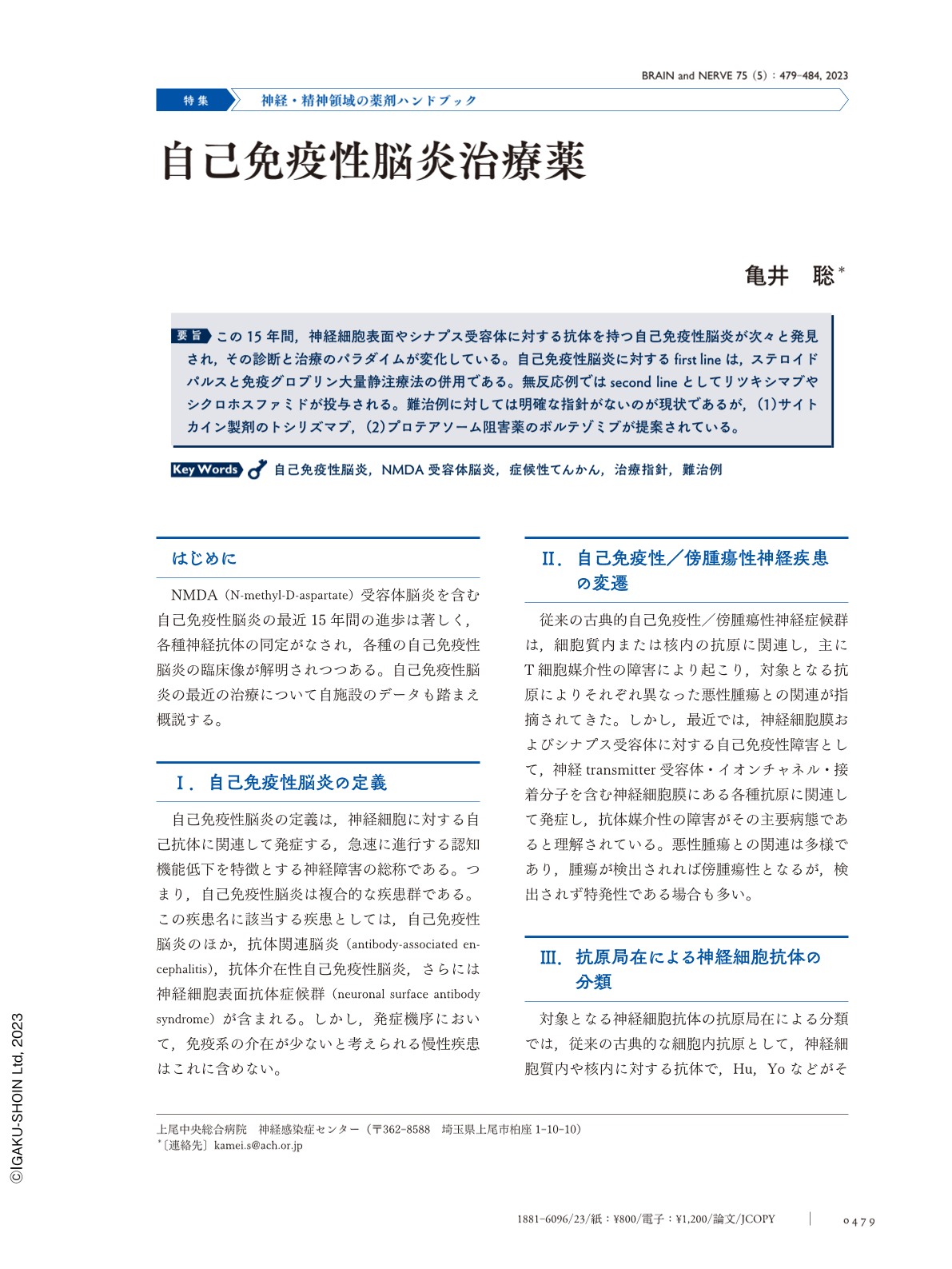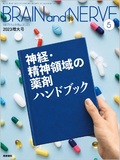Japanese
English
- 有料閲覧
- Abstract 文献概要
- 1ページ目 Look Inside
- 参考文献 Reference
この15年間,神経細胞表面やシナプス受容体に対する抗体を持つ自己免疫性脳炎が次々と発見され,その診断と治療のパラダイムが変化している。自己免疫性脳炎に対するfirst lineは,ステロイドパルスと免疫グロブリン大量静注療法の併用である。無反応例ではsecond lineとしてリツキシマブやシクロホスファミドが投与される。難治例に対しては明確な指針がないのが現状であるが,(1)サイトカイン製剤のトシリズマブ,(2)プロテアソーム阻害薬のボルテゾミブが提案されている。
Abstract
In the last 15 years, the continual discovery of newly identified forms of autoimmune encephalitis (AE) associated with antibodies to the cell surface or synaptic proteins has changed the paradigms for diagnosing and treating disorders. AE is one of the most common causes of noninfectious encephalitis. It can be triggered by tumors or, infections, or it may be cryptogenic. These disorders can occur in children or young adults with or without cancer who develop psychosis, catatonic or autistic features, memory problems, abnormal movements, or seizures. Here, we review the therapeutic management of AE. The importance of early recognition and diagnosis of AE is paramount to the ultimate goal of optimal immunotherapy. Although no specific data are available for all autoantibody-mediated encephalitis syndromes, the two most common forms of AE, which are NMDA receptor encephalitis and LGI-1 encephalitis, are clear exemplars where improved patient outcomes are associated with early immunotherapy. First-line treatments for AE include intravenous steroids and intravenous immunoglobulins, which can be combined in most severe cases. Rituximab and cyclophosphamide are administered as second-line agents in unresponsive cases. A minority of patients may remain refractory to treatment, thus representing a major clinical challenge. In these cases, the treatment strategies are controversial, and no guidelines exist. Treatments proposed for refractory AE include (1) cytokine-based drugs such as tocilizumab, and (2) plasma cell-depleting agents such as bortezomib.

Copyright © 2023, Igaku-Shoin Ltd. All rights reserved.


